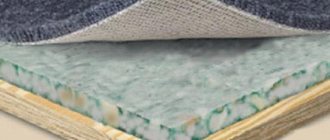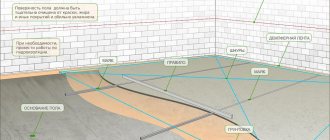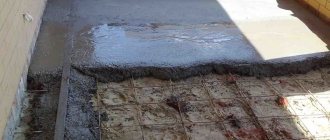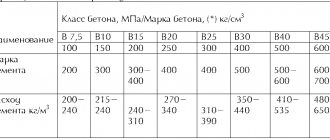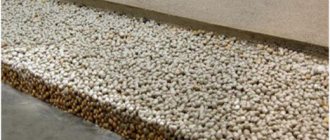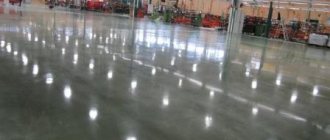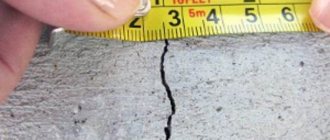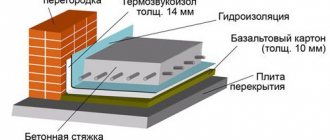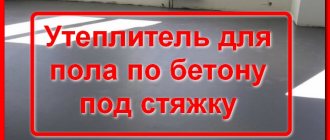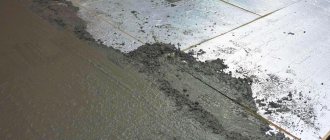Where should you start repairing a new building? C arranging a floor screed. The only reason to postpone this work is the owner’s desire to build or dismantle partitions. You should trust the pouring or installation of screed only to professionals, such as the professionals from ProfService.
To find out the cost of the screed, fill out the form below:
FIND OUT THE COST OF REPAIRS This does not oblige you to anything.
We will gladly tell you about the intricacies of screed work in this article.
So how much does a floor screed cost, price per m2?
The cost of floor screed greatly depends on the condition of the subfloor. It’s good if you come across conscientious builders who correctly leveled the floor. The ideal option is monolithic professional pouring of interfloor ceilings. But, quite often, you have to deal with poorly laid slabs with large irregularities.
In this case, a floor screed will cost you several times more , the price of which directly depends on the amount of materials used.
Calculation of the cost of the screed includes:
- Floor area.
- Thickness of the screed layer.
- The cost of the craftsmen's work.
Volume of mixture for screed
For arranging 1 m2 of screed 3 cm thick
0.03 m3 of mixture
is required. The minimum screed thickness recommended by professionals is 3 cm.Calculation:
100 cm (length) x 100 cm (width) x 3 cm (height) = 30,000 cm3 = 0.03 m3.
* 1 m3 of dry building mixture for screed weighs 1 ton.
Number of bags
For 1 m2 of screed, a minimum of 30 kg bag of mixture is required
.
For an apartment of 70 m2 - 70 bags.
* 0.03 m3 is 0.03 tons or 30 kg.
Cost of a bag of cement
The cost of a bag of screed mixture starts from 120 rubles.
Total
Materials cost
: 120 rubles x 70 bags =
8,400 rubles
.The cost of work can vary greatly among different construction companies. Pouring the floor in an apartment, the price for the work is 550 rubles per m2.
The work of masters is worth
: 550 rubles x 70 m2 =
38,500 rubles
.The cost of screeding an apartment of 70 m2 with a thickness of 3 cm
is: 8,400 rubles + 38,500 rubles =
46,900 rubles
.
You can find the detailed price list here:
Material
Well, let's go over the material. Let's calculate how much material we need for 1 square meter of housing. This way you can easily multiply by your area and get the total.
Here guys I will say one thing, you need to take into account your floors and the so-called “collapse” angle:
- There are normally made ones, for example, floor slabs, or a monolith, as a rule - they are more or less even, and little material is needed for the screed. These are used in multi-storey buildings.
- And there are completely “uneven” ones, with a poor rough surface, where there is a large angle and it needs to be leveled to a normal level. This could take a lot more material.
Before we begin the calculation, I’ll say that the ideal screed is from 3 to 5 cm thick, it will lay in a normal layer and, if all installation standards are observed, it will not crack.
Some, in pursuit of savings, install only 1 - 2 cm - this is “negligible” little! DON'T DO THIS! It will crack very quickly and you will have to do double work, and this is not small money.
Based on material consumption per 1 square meter.
The calculation is quite simple. We all know that a cubic meter contains approximately 1000 kg of bulk mixtures, including screeds. One bag is packed with a maximum of 50 kilograms, but now 25 and 30 kg bags have become very popular, how long do they last, do you think?
It's simple. If we fill only 3 cm, then we conditionally get - 1000 cm X 1000 cm X 0.03 cm = 30 cm3, that is, this is 3 percent of our cube (1000 kg). Thus, it turns out that we need 1000 kg X 3% = 30 kg. That is, a 30 kg bag per 1 meter of floor is the minimum consumption of material.
But as I already wrote to you, ideally you need to pour 5 cm, which is 1 bag of 50 kilograms per 1 square meter of floor. REMEMBER THIS!
Thus, if you have an apartment of 70 meters, then the material consumption is 70 bags (either 30 kg - 3 cm, or 50 kg - 5 cm).
Which brand of screed should I choose?
Everything here is also simple - I personally will not advertise this or that company, but you need to remember one important parameter - this is “compressive strength” or simply “compression”, this will be written on the bag.
In general, we take no less - 25, and ideally - 30 MPa.
The strength for an apartment is enough for the eyes, this indicates a normally prepared mixture.
A few words about those who want to knead the composition with their own hands - buy cement and sand separately. Guys, there are more “hemorrhoids”, but you won’t save as much. However, if there is a fuse, then you need to prepare the mixture composition - M200 (this is for one bucket of pure cement of the M400 brand - add two buckets of sand).
For the money
If you price it, you get a normal screed (you shouldn’t “chase” the brand, sometimes a regional manufacturer is better) - it costs from 160 to 220 rubles for a 30 kg bag.
We count a maximum of 70 bags (70 sq.m.) X 220 rubles = 15,400 rubles.
Again, this is a thickness of only 3 cm and perfectly smooth floors “without blockages”. However, if there is a slope, then it is worth buying another 10 bags of screed with a reserve (the builders will tell you). That is, finally - 80 bags - 17,600 rubles.
Floor screed
Name of workUnits unit Price of MBR (rub) Dismantling with screed²400 Installation of floor screed using beacons up to 5 cm²550 Filling with self-leveling screed²300 Installation of reinforcement, mesh under the screed²240 Primer under the screed²50 Filling with expanded clay²90Things to consider
For calculations you will need such data.
- The cost of carrying out work on screed arrangement. You can find this out from advertisements in newspapers, from familiar builders, and on the Internet.
- Price of materials: sand, cement, bedding, waterproofing, beacons.
- The cost of transporting everything necessary to the construction site.
- Financial expenses for lifting materials if the house is multi-story.
Note! It must be taken into account that in most cases, the screed device rarely consists only of pouring mortar. Before this, the base is often prepared, insulated, waterproofed, and reinforced. All this significantly increases cash costs.
Types of screeds
When making renovations in an apartment, it is worth considering that the screed, the price of which can vary greatly, comes in several types:
Wet
Wet screed is the most traditional option for arranging a subfloor. The finished dry mixture or cement with sand in a certain proportion (1:2) is poured with water and mixed until the viscosity of thick sour cream.
The resulting mixture is poured evenly over the entire area and leveled on top.
Semi-dry
Just 10-15 years ago, wet screed was the only available way to arrange a subfloor in an apartment or private house. But today, homeowners often prefer semi-dry screed.
Detailed information about it is collected in our article.
Dry
Dry screed is gradually gaining popularity among apartment owners in Moscow . It is performed without cement and sand. The base of the floor is covered with fine-grained granules. Gypsum fiber boards are mounted on top of this layer.
Dry technology allows you to lay floors immediately after installing the screed. It is also fast and simple.
Order “Floor Screed” Applications are accepted around the clock.
Estimates for pouring concrete floors
Concrete coating is the best option for covering floors in industrial premises, warehouses, workshops and hangars. Most developers prefer it due to the organic combination of important physical and technical characteristics, including long service life, high wear resistance, high temperature tolerance and inertness under the influence of chemical compounds.
Price for concrete floors
depends on the chosen technology for laying concrete pavement.
The higher the quality of the raw materials, the longer the floor will last. Accordingly, the more it will cost the customer. The cost of the work is also affected by the additives used - toppings. Thanks to them, the finished structure receives a number of advantages, including dust resistance, increased service life, and eliminating the possibility of delamination. It is worth noting that the estimate for a concrete floor
will be drawn up correctly only if it includes the cost of all stages of concrete pouring work. We invite you to take a closer look at what the installation process looks like in practice.
The first step is a geodetic survey, during which all the preparatory work is done. In this case, the craftsmen are faced with the following tasks: determining the floor level, measuring the coverage area, calculating the consumption of concrete mixture and reinforcing additives. After the geo-base has been drawn up, you can safely begin the preliminary preparation of the base floor surface. You need to understand that the price for a concrete floor
includes the cost of a gravel bed, as well as payment for soil compaction services.
The next stage is waterproofing the floor. Before pouring concrete, the soil base must be isolated from the concrete surface. The fact is that moisture can seep through the soil, destroying the concrete floor. Special membranes, resins and construction polyethylene film can be used as a waterproofing layer. Do not underestimate the importance of work at this stage, since it directly affects the durability of the poured concrete floor.
Estimate for concrete floors
will not be complete without formwork. We are talking about a fairly simple working structure, consisting of rectangular blocks of the required size. Properly assembled formwork allows you to pour concrete in the place where it is needed, without wasting an excessive amount of construction raw materials. Metal wire or steel rods are placed in the resulting rectangular blocks constructed from boards - this is a reinforcing frame, which ultimately significantly increases the strength of the concrete floor.
On the other hand, the cost of laying a concrete base
also depends on the complexity of construction and installation work. After the concrete mixture has hardened, some developers level the concrete screed using grinding machines and special high-tech equipment for this purpose. Joints, sagging and ripples are removed using a milling machine, putty and a grinder. All of these are additional expense items that are ultimately reflected in the estimate. If you want to correctly and accurately calculate the budget for construction work, you will have to think through to the smallest detail all the tasks that will appear before the construction team.
Materials for arranging the screed
The main materials for arranging wet and semi-dry screeds are special ready-made dry building mixtures.
These SSS consist of 3 main ingredients:
- Cement. To construct the screed, cement of a grade not lower than M200 is used. The higher the grade of cement used, the stronger and faster it sets.
- Sand. For high-quality mixtures, thoroughly washed fine sand without foreign impurities (clay and dirt) is used.
- Modifying additives. They give the mixture additional positive properties:
- accelerate hardening;
- increase strength;
- improve the fluidity of the solution;
- reduce drying time.
Craftsmen will always help you make a durable screed in your apartment. Contact us to complete your apartment renovation perfectly.
Possible types of work
The photo shows an example of an estimate.
Let's take a closer look at what layers the screed can consist of.
Arrangement of the base
- The base for the rough covering can be gravel or crushed stone, sand, expanded clay, slag, etc. The choice of backfill material depends on the operating requirements and the planned loads on the floor.
- Bulk building materials are needed not only for creating insulation. They are also used when it is necessary to greatly raise the floor level. Doing this by pouring a very thick screed is expensive.
You can use different materials as bedding.
- If bedding is not used, there is often a need to create a heat and sound insulation layer.
- The consumption of materials for bedding must be multiplied by a special coefficient, since they are compacted. For example, for quartz sand this value is 1.12, for slag it is 1.28, for gravel and crushed stone the figure is 1.546.
Waterproofing and reinforcement
Screed reinforcement diagram.
When pouring concrete floors with your own hands, and even in damp rooms, you need to lay a layer of waterproofing under the screed. You can use thick polyethylene film for this.
If the floors will experience high constant loads or you cannot fill the solution with a layer of more than 3 cm , the coating must be strengthened and made resistant to deformation and cracking.
Reinforcement will help with this. It can be carried out using a reinforcement frame or wire mesh laid on the base.
Solution
As a rule, M-150 solution is used to lay the screed. To fill 1 cubic meter of it you need 400 kg of Portland cement and 1.2 cubic meters of quartz sand.
Note! On reinforced concrete or monolithic concrete floors, the mortar can be laid with a thickness of 2 cm or more. If the screed is made on a backfill of crushed stone, slag, sand, etc., the thickness of the solution should be at least 4 cm.
Removal of old and installation of new floors
For example, after replacing the floor in old houses (Khrushchev, Stalin, and others), after dismantling, you can see a difference in the base from 5 to 15 cm. In such cases, you can use a cement screed, but it will be more expensive and will create a load on the floor slab. For houses with wooden floors or I-beams, this method is not suitable at all. Self-leveling flooring is not possible due to the large drop height, but wooden planks or dry Knauf floors can be successfully used in such cases.
An example of drawing up a local estimate
Knowing all the data, you can begin to calculate costs.
Let's look at drawing up an estimate using a specific example.
- Let the base be made of crushed stone, 5 cm thick.
- We will provide a waterproofing device.
- The reinforcement will be made of mesh.
- The thickness of the solution layer will be 4 cm.
- The total flooded area will be 100 m².
Calculation of the base device
- First, we multiply 100 m² by 0.05 m. As a result, we get the volume of crushed stone backfill - this is 5 m³.
- To find out the required amount of material that should be purchased in tons, the volume of the crushed stone cushion should be multiplied by the compaction coefficient of 1.546, and the resulting figure multiplied by 1.48. In other words: 5×1.546×1.48=11.44 tons.
- The cost of backfilling the foundation is approximately 300 rubles per cubic meter. In the case of our example, the workers need to pay 1,500 rubles.
- Crushed stone costs 720 rubles per ton, which means that for 11.44 tons you should pay 8238 rubles.
- The cost of backfilling together with work is 9738.
Moisture insulation
- Let the floor waterproofing be made of polyethylene having a thickness of 250 microns.
- As the instructions indicate, the film will be placed on the walls to a height of 10 cm. When laying, the polyethylene panels will be overlapped and secured with tape.
- For an area of 100 m² you will need 112 square meters of film. At a price of 10.5 rubles per 1 m², all polyethylene will cost 1176 rubles.
- The price for installing waterproofing of this type in the described area will be 900 rubles (9 rubles/m²).
- As a result, the total cost of moisture insulation will be 2076.
- For our example, let’s take a mesh of steel wire with a diameter of 0.3 cm and having cells of 10×10 mm for reinforcement.
- This material costs 38.7 rubles/m². Consequently, our area will cost 3,870 rubles worth of nets.
- The cost of the work is about 30 rubles/m², per 100 sq. meters you will have to pay 3000 rubles.
- Here the total is 6870.
Screed reinforcement and mortar preparation
Now about preparing the solution.
- To determine the volume of a screed having a thickness of 5 cm, you need to multiply this figure by a factor of 1.02. We get 5.1 cubic meters.
- Remembering that one cubic meter of solution requires 400 kg of cement, we multiply this figure by 5.1 and get 2.04 tons. They will cost 6360. Our volume of solution will require 6.12 cubic meters of sand. They will cost 1500 rubles.
- Workers will charge for preparing the mixture: 5.1×450=765 rubles.
- The result of this stage: 10155.
Pouring the solution
The cost of pouring depends on the thickness of the solution.
Conclusion
If you can independently calculate the cost of laying the screed, you will know not only how much money you will need for building materials and transport. Provided that the work will be carried out by hired workers, you will be able to understand whether the price they are asking for for the services provided is fair. (also find out how to vapor barrier a floor).
